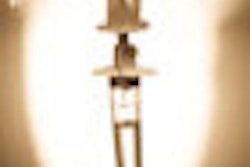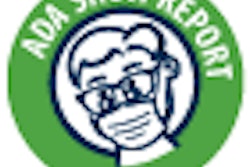
Dental anesthesiology came close to becoming the 10th ADA recognized specialty but fell short last week when a majority of the House of Delegates (HOD) voted against approving Resolution 16 during the 2012 ADA Annual Session in San Francisco.
"We couldn't overcome the political nature of what the ADA HOD is," said Steven Ganzberg, DMD, a clinical professor and the chair of dental anesthesiology at the University of California, Los Angeles and the president of the American Dental Board of Anesthesiology. "This action by the ADA confirms that the ADA process of specialty approval is fatally flawed."
Leading up to the HOD vote, the application submitted by Dr. Ganzberg and a group of fellow anesthesiologists had been supported by the Council on Dental Education and Licensure (CDEL), its Committee on Recognition of Specialties and Interest Areas in General Dentistry, and the ADA Board of Trustees.
The American Association of Oral and Maxillofacial Surgeons (AAOMS) disputed that there was a need for dental anesthesiology to become an ADA specialty and felt that the application did not pass muster.
"When we saw the application for specialty recognition, we felt that overall it did not meet the requirements of the ADA for recognition," explained Miro Pavelka, DDS, MSD, president of AAOMS, in an interview with DrBicuspid.com. "Right now, even though this specialty was not approved, this has absolutely no effect on the ability of the dentist anesthesiologists to continue practicing exactly as they do."
Dr. Ganzberg disagreed. "This was clearly an effort by the ADA, through AAOMS, to restrict professional activities that specialty recognition would have provided," he told DrBicuspid.com.
In a previous article, he and other supporters expressed optimism that passage would lead to increased training and emergency preparedness at dental schools, increased treatment options, and insurance reimbursement.
Requirements for recognition
The ADA CDEL's Committee on Recognition of Specialties and Interest Areas in General Dentistry studied the application for a year after it was submitted in June 2011. Six requirements are outlined by the ADA that must be met in order for it to pass. While the application passed the review process up until the HOD, the AAMOS remained unconvinced.
“We felt like this application didn't meet the requirements the ADA put in place. ”
of AAOMS
"The first one that really caught our eye was requirement 3A, which requires that the specialty be separate and distinct from any recognized dental specialty or combination of recognized dental specialties," Dr. Pavelka explained. "It's been the contention of AAMOS that anesthesia is a core competency of dentistry, and for 160 or more years many recognized specialty providers and general dentists have incorporated advanced forms of anesthesia, including general anesthesia, into their practices."
The application was also centered around increased training for the dental anesthesiology resident, he added. "And I would submit to you that increased training in a special interest area of dentistry does not equal separate and distinct," he said.
AAOMS also disputed the application's satisfaction of requirement 5, that "a proposed specialty must directly benefit some aspect of clinical patient care."
"The application stated that ‘the mobile dentist anesthesiologist can quickly transform the operating dentist's office into a mini operating room for patients who are medically complex, as well as those with special needs,' " Dr. Pavelka stated. "That's really troublesome to me personally. Even though [a dentist anesthesiologist] brings monitors and some other safety equipment with him, he's coming into an environment that is probably a general dentist who does not have his level of training and a staff that is not up to speed on an anesthesia emergency situations."
"Based on those two, we felt like this application didn't meet the requirements the ADA put in place," he said.
Dr. Ganzberg contended that there was nothing wrong with their application. "All the criteria were met, according to the Committee on Specialty Recognition and overwhelming approval from the Council on Dental Education and Licensure, the ADA Trustees, and the Dental Education Reference Committee," he said.
Politics or patient safety?
In Dr. Ganzberg's view, politics and influence sank the application. He characterized AAOMS' concerns about patient safety as "misinformation" and took umbrage at the suggestion that dentist anesthesiologists were unsafe.
"We need to work together to improve safety," Dr. Ganzberg said. "Unfortunately, oral surgery's tactics have undermined their relationship with dental anesthesiology. This is unfortunate for oral surgery, as the data are not desirable for them."
The AAOMS also had concerns about the future of anesthesiology in dentistry if the application passed.
"Once you get a specialty in medicine or dentistry established, then they become the authority," Dr. Pavelka said. "And I'm not sure where it would go. If it got to the point where this medical model is established, then hypothetically we could get to the point where the only person that could provide the anesthesia is a trained dentist anesthesiologist, and the rest of us would be left out of the loop. I hope that that doesn't happen."
Dr. Ganzberg agreed. "I'd personally fight that," he said. "It's not good for patients if oral surgeons cannot do deep sedation. They're worried that we won't support them in the future, but I don't know what else to say to that other than, ‘Look at our track record.' "
However, he noted that oral surgeons' ability to continue doing deep sedation will not be jeopardized by fellow practitioners in dentistry.
"The threat is going to come from medicine, which will at some point stop training oral surgeons as they are clearly opposed to what oral surgeons do: operator anesthesia," Dr. Ganzberg stated. "They'll stop training them and then they'll have their own problems."
In light of the results during the HOD, dentist anesthesiologists have moved on from the ADA specialty approval process, which Dr. Ganzberg views as flawed.
"Staying with this format will be destructive to the ADA," he said. "We will no longer be applying for specialty status through ADA. We'll pursue other state and federal remedies outside of them."
According to the ADA, changes to the specialty approval process may occur, and the ADA is not taking any additional applications for the time being.
"In San Francisco, the House adopted Resolution 185H-2012 calling for the Council on Dental Education and Licensure to review the process and criteria for recognizing dental specialties and report to the 2013 House of Delegates with appropriate recommendations on how to improve the process and evaluation criteria," the ADA wrote in an email to DrBicuspid.com. "Further, Resolution 185H-2012 directs that the ADA take no action on any application for recognition of a specialty in dentistry until CDEL has completed a review of the requirements for specialty recognition and reported such recommendations to the House of Delegates for adoption."



















